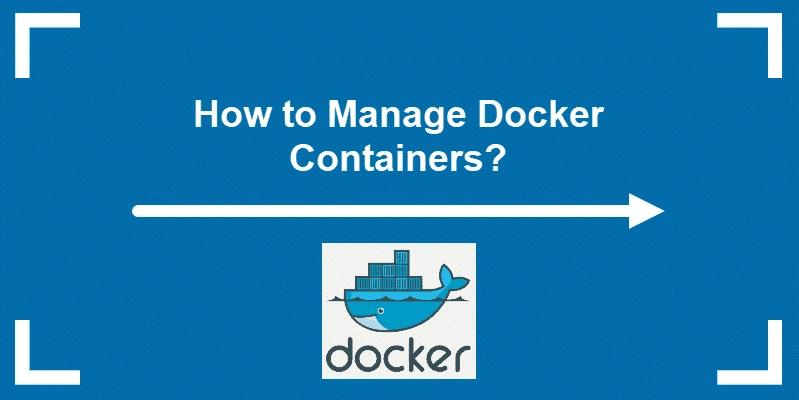From Manual to Magical: Transforming Accounts Payable with Automation
Accounts Payable (AP) is often seen as one of the more tedious functions within finance departments — piles of invoices, manual data entry, approval bottlenecks, and paper trails that never seem to end. But thanks to automation, what was once a painstakingly slow and error-prone process is transforming into a streamlined, efficient, and even magical operation. This transformation isn't just about making life easier for AP clerks. It's about unlocking value, improving cash flow management, strengthening vendor relationships, and giving businesses more control and insight into their financial operations. In this post, we’ll dive into how AP automation is revolutionizing finance teams, the benefits it brings, and how to make the shift from manual to magical. The Problem with Manual Accounts Payable Traditional AP processes are rife with inefficiencies. These include: Manual Data Entry: Entering invoice details into accounting systems is time-consuming and prone to human error. Paper Invoices: Handling physical documents increases the risk of lost or misplaced invoices. Slow Approval Cycles: Getting the right sign-offs can take days or even weeks, especially with geographically dispersed teams. Lack of Visibility: Tracking invoice status manually makes it difficult to get real-time insights into outstanding liabilities. Risk of Errors and Fraud: Duplicate payments, missed discounts, or even fraudulent invoices can slip through due to lack of control. These inefficiencies can result in delayed payments, strained vendor relationships, and missed opportunities for early payment discounts. What is AP Automation? AP automation is the use of technology to streamline and digitize the accounts payable process. It typically involves software solutions that handle invoice capture, data extraction, approval routing, and payment processing. Here’s how it works: Invoice Capture: Invoices are received digitally or scanned into the system. Data Extraction: Intelligent software reads and extracts relevant data (vendor name, invoice number, amount, etc.). Approval Routing: The invoice is automatically sent to the appropriate person for approval. ERP Integration: Once approved, the data is synced with your ERP or accounting system. Payment Execution: Payments are scheduled and executed electronically. In essence, automation removes much of the manual labor and introduces speed, accuracy, and visibility into the AP process. Key Benefits of AP Automation 1. Time Savings Automating invoice processing can reduce processing time by up to 80%. This frees up your AP team to focus on strategic tasks rather than mundane data entry. 2. Reduced Errors With OCR (Optical Character Recognition) and AI, invoice data is captured with high accuracy, reducing the risk of human error. 3. Faster Approvals Automated workflows ensure that invoices are routed to the right approver immediately. No more chasing signatures or losing documents in email chains. 4. Cost Reduction Studies show that companies can save as much as 60-70% on invoice processing costs through automation. Reduced paper use, fewer errors, and faster processing all contribute to this. 5. Improved Vendor Relationships Timely and accurate payments help build trust with suppliers. You’re also more likely to take advantage of early payment discounts. 6. Enhanced Visibility and Control Real-time dashboards and reporting give finance teams better insight into cash flow, outstanding liabilities, and overall financial health. 7. Fraud Prevention Built-in controls and audit trails help prevent duplicate payments and flag suspicious invoices for review. Choosing the Right AP Automation Tool Not all AP automation platforms are created equal. When evaluating options, consider the following: Integration Capabilities: Does it work seamlessly with your existing ERP/accounting system? Scalability: Can it handle your volume today and grow with your business? User Experience: Is it easy for both AP staff and approvers to use? AI/ML Capabilities: Does it leverage smart technologies for better accuracy and efficiency? Security & Compliance: Are there robust security protocols and audit trails? Look for a solution that not only automates, but also optimizes your workflows and provides actionable insights. Getting Started: Steps to a Smooth Transition Transitioning from manual to automated AP doesn’t have to be overwhelming. Here’s a roadmap to get started: Evaluate Your Current Process: Identify bottlenecks, pain points, and inefficiencies. Set Clear Objectives: Define what you want to achieve — time savings, cost reduction, improved visibility, etc. Choose the Right Vendor: Research and demo multiple solutions to find the best fit. Prepare Your Team: Train staff, communicate changes, and get buy-in from leadership. Start Small:

Accounts Payable (AP) is often seen as one of the more tedious functions within finance departments — piles of invoices, manual data entry, approval bottlenecks, and paper trails that never seem to end. But thanks to automation, what was once a painstakingly slow and error-prone process is transforming into a streamlined, efficient, and even magical operation.
This transformation isn't just about making life easier for AP clerks. It's about unlocking value, improving cash flow management, strengthening vendor relationships, and giving businesses more control and insight into their financial operations. In this post, we’ll dive into how AP automation is revolutionizing finance teams, the benefits it brings, and how to make the shift from manual to magical.
The Problem with Manual Accounts Payable
Traditional AP processes are rife with inefficiencies. These include:
- Manual Data Entry: Entering invoice details into accounting systems is time-consuming and prone to human error.
- Paper Invoices: Handling physical documents increases the risk of lost or misplaced invoices.
- Slow Approval Cycles: Getting the right sign-offs can take days or even weeks, especially with geographically dispersed teams.
- Lack of Visibility: Tracking invoice status manually makes it difficult to get real-time insights into outstanding liabilities.
- Risk of Errors and Fraud: Duplicate payments, missed discounts, or even fraudulent invoices can slip through due to lack of control.
These inefficiencies can result in delayed payments, strained vendor relationships, and missed opportunities for early payment discounts.
What is AP Automation?
AP automation is the use of technology to streamline and digitize the accounts payable process. It typically involves software solutions that handle invoice capture, data extraction, approval routing, and payment processing.
Here’s how it works:
- Invoice Capture: Invoices are received digitally or scanned into the system.
- Data Extraction: Intelligent software reads and extracts relevant data (vendor name, invoice number, amount, etc.).
- Approval Routing: The invoice is automatically sent to the appropriate person for approval.
- ERP Integration: Once approved, the data is synced with your ERP or accounting system.
- Payment Execution: Payments are scheduled and executed electronically.
In essence, automation removes much of the manual labor and introduces speed, accuracy, and visibility into the AP process.
Key Benefits of AP Automation
1. Time Savings
Automating invoice processing can reduce processing time by up to 80%. This frees up your AP team to focus on strategic tasks rather than mundane data entry.
2. Reduced Errors
With OCR (Optical Character Recognition) and AI, invoice data is captured with high accuracy, reducing the risk of human error.
3. Faster Approvals
Automated workflows ensure that invoices are routed to the right approver immediately. No more chasing signatures or losing documents in email chains.
4. Cost Reduction
Studies show that companies can save as much as 60-70% on invoice processing costs through automation. Reduced paper use, fewer errors, and faster processing all contribute to this.
5. Improved Vendor Relationships
Timely and accurate payments help build trust with suppliers. You’re also more likely to take advantage of early payment discounts.
6. Enhanced Visibility and Control
Real-time dashboards and reporting give finance teams better insight into cash flow, outstanding liabilities, and overall financial health.
7. Fraud Prevention
Built-in controls and audit trails help prevent duplicate payments and flag suspicious invoices for review.
Choosing the Right AP Automation Tool
Not all AP automation platforms are created equal. When evaluating options, consider the following:
- Integration Capabilities: Does it work seamlessly with your existing ERP/accounting system?
- Scalability: Can it handle your volume today and grow with your business?
- User Experience: Is it easy for both AP staff and approvers to use?
- AI/ML Capabilities: Does it leverage smart technologies for better accuracy and efficiency?
- Security & Compliance: Are there robust security protocols and audit trails?
Look for a solution that not only automates, but also optimizes your workflows and provides actionable insights.
Getting Started: Steps to a Smooth Transition
Transitioning from manual to automated AP doesn’t have to be overwhelming. Here’s a roadmap to get started:
- Evaluate Your Current Process: Identify bottlenecks, pain points, and inefficiencies.
- Set Clear Objectives: Define what you want to achieve — time savings, cost reduction, improved visibility, etc.
- Choose the Right Vendor: Research and demo multiple solutions to find the best fit.
- Prepare Your Team: Train staff, communicate changes, and get buy-in from leadership.
- Start Small: Begin with a pilot program or a single department before rolling out company-wide.
- Measure and Optimize: Track KPIs like invoice cycle time, processing cost, and exception rates. Use this data to continuously improve.
The Future of Accounts Payable
As businesses continue to digitize and prioritize efficiency, AP automation will become the norm rather than the exception. In the future, we can expect even more intelligent systems — AI that predicts anomalies, blockchain for transparent audit trails, and fully touchless invoice processing.
The finance department is no longer just about crunching numbers — it’s becoming a strategic powerhouse. And automating AP is one of the smartest steps toward that transformation.
Final Thoughts
Accounts Payable Automation is a game-changer for modern finance teams. By streamlining invoice processing, reducing manual errors, and accelerating approval workflows, it transforms AP from a time-consuming task into a strategic advantage. This shift not only saves time and money but also enhances visibility, improves vendor relationships, and supports better cash flow management.
In today’s fast-paced business environment, adopting Accounts Payable Automation is essential for staying competitive and efficient. Whether you're scaling up or optimizing existing processes, automation empowers your team to focus on value-driven work and positions your organization for long-term financial success.










































































































































































![[The AI Show Episode 144]: ChatGPT’s New Memory, Shopify CEO’s Leaked “AI First” Memo, Google Cloud Next Releases, o3 and o4-mini Coming Soon & Llama 4’s Rocky Launch](https://www.marketingaiinstitute.com/hubfs/ep%20144%20cover.png)




























































































































![[DEALS] The All-in-One Microsoft Office Pro 2019 for Windows: Lifetime License + Windows 11 Pro Bundle (89% off) & Other Deals Up To 98% Off](https://www.javacodegeeks.com/wp-content/uploads/2012/12/jcg-logo.jpg)



























![Is this too much for a modular monolith system? [closed]](https://i.sstatic.net/pYL1nsfg.png)






















































































































_Andreas_Prott_Alamy.jpg?width=1280&auto=webp&quality=80&disable=upscale#)




























































































![What features do you get with Gemini Advanced? [April 2025]](https://i0.wp.com/9to5google.com/wp-content/uploads/sites/4/2024/02/gemini-advanced-cover.jpg?resize=1200%2C628&quality=82&strip=all&ssl=1)












![Apple Shares Official Trailer for 'Long Way Home' Starring Ewan McGregor and Charley Boorman [Video]](https://www.iclarified.com/images/news/97069/97069/97069-640.jpg)
![Apple Watch Series 10 Back On Sale for $299! [Lowest Price Ever]](https://www.iclarified.com/images/news/96657/96657/96657-640.jpg)
![EU Postpones Apple App Store Fines Amid Tariff Negotiations [Report]](https://www.iclarified.com/images/news/97068/97068/97068-640.jpg)
![Apple Slips to Fifth in China's Smartphone Market with 9% Decline [Report]](https://www.iclarified.com/images/news/97065/97065/97065-640.jpg)



































































































































